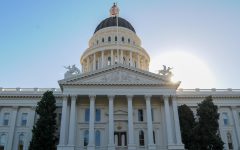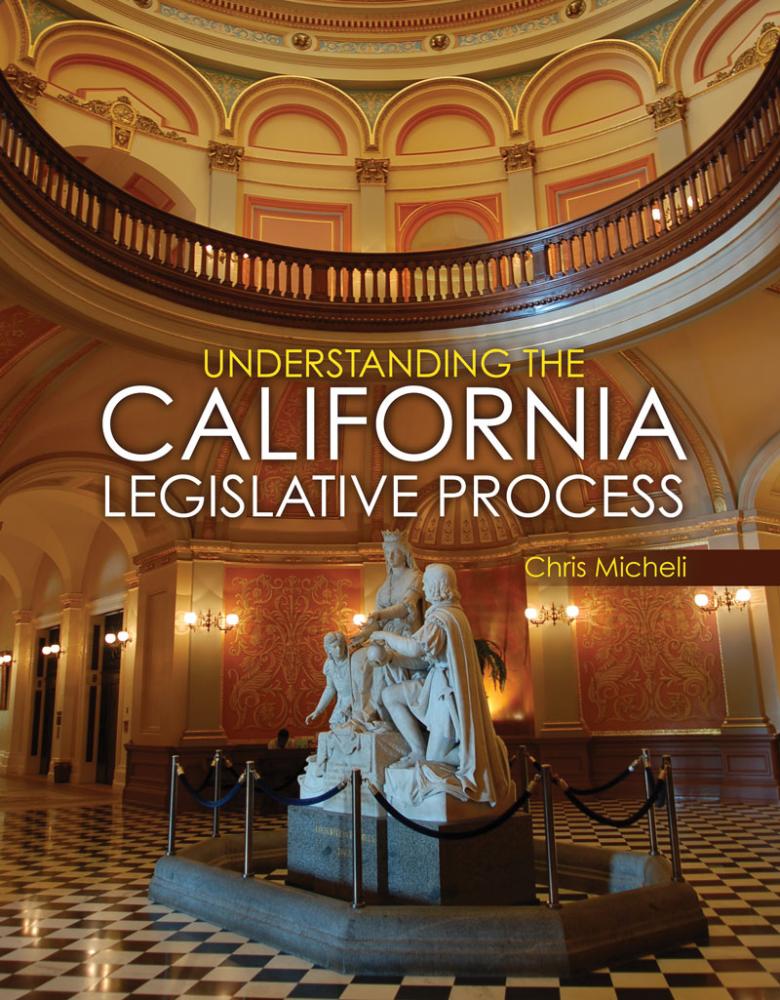
Legal System. (Photo: Billion Photos/Shutterstock)
Frequently Asked Questions about Courts Interpreting California’s Legislative Process
How is making changes to a statute after a court decision viewed by the judiciary?
By Chris Micheli, December 17, 2023 8:50 am
The California Government Code, among other sources, provides a number of procedural rules for the State Legislature and the lawmaking process in this state. And a number of those statutory provisions have been the subject of litigation, so we have appellate court guidance in how to interpret them.
What must occur for there to be a presumption of statutory amendments? The presumption that a statutory amendment was intended to change the meaning of the statute applies only when there is a material change contained in the language of the amended act. Dalton v. Baldwin (1944) 64 Cal.App.2nd 259
What is evidence is shown by a statutory amendment? The amendment of a statute is evidence of an intention to change the rule stated by the court in applying its provisions. Butcher v. Brouwer (1942) 21 Cal.2nd 354
How is making changes to a statute after a court decision viewed by the judiciary? The fact that a lawmaking body knew decisions of appellate courts and made a substantial change in phraseology of a subdivision of the statute indicated an intention to affect a change of its meaning. Thomas v. Driscoll (1940) 42 Cal.App.2nd 23
Can a statutory initiative impose rule on the internal operations of the Legislature? No. Provisions of a statutory initiative measure regulating appointments of the Assembly Speaker and Senate President pro tempore regulating appointments and powers of standing, select, joint, and interim committees of the houses, regulating methods of adoption of rules for conduct of the houses, providing that statutory provisions may not be amended or modified except as permitted by the Act, and repealing existing provisions of the Government Code relating to such subjects are invalid as in conflict with provisions of the State Constitution granting legislative bodies the power to enact rules or resolutions. People’s Advocate, Inc. v. Superior Court (RPI California Legislature) (1986) 181 Cal.App.3d 316
Does the Legislature have subpoena power? Yes. For example, a branch of the Legislature had power to require and compel attendance of witnesses and the production of documents before it or its duly accredited committees. In re Battelle (1929) 207 Cal. 227
Does the Legislature have the power to investigate its own Members? Yes. For example, the Senate has the power to investigate charges of bribery against its own members and, in the exercise thereof, could summon and examine witnesses. Ex parte McCarthy (1866) 29 Cal. 395
Can a court in this state force the Legislature to exercise its lawmaking powers? No, the courts may not order the Legislature or its members to enact or not to enact legislation, nor may it order the Governor to sign or not to sign legislation. Serrano v. Priest (1976) 18 Cal.3d 728, certiorari denied 432 U.S. 907
What must the Governor do when a bill becomes law without the Governor’s signature? For a bill to become law without his signature, he is required to authenticate the bill by causing the Secretary of State to certify that fact and deposit it with the laws in the office of the Secretary of State. De Asis v. Department of Motor Vehicles (2003) 112 Cal.App.4th 593
What does “to take effect immediately” mean with an urgency statute? The “three strikes” statute was effective immediately when it was signed by the Governor and transmitted to the Secretary of State and, thus, it applied to the defendant who was arrested approximately seven and one-half hours on the same date, despite the contention that the term “immediately” in statute meant the next day. People v. Cargill (1995) 38 Cal.App.4th 1551, rehearing denied, review denied
What will a court look for in a bill to determine whether it should be applied retroactively? A statutory change in the Labor Code, which is substantive in character, does not act retroactively absent a clear showing of legislative intent that it should do so. The legislative intent calling for the retroactive operation of a statutory change may be found in such factors as context, objective of the legislation, evils to which it is addressed, social history of the times and legislation upon the same subject, public policy enunciated or vindicated by enactment and effect of particular legislation upon the entire statutory scheme of which it is a part. Industrial Indemnity Company v. Workers’ Compensation Appeals Board (1978) 85 Cal.App.3d 1028.
Do the courts read other statutes when interpreting an ambiguous code section? Yes. For purposes of statutory construction, various sections of all codes must be read together and harmonized if possible. Channell v. Superior Court of Sacramento County (1964) 226 Cal.App.2d 246
How do courts view statutes on the same topic? Statutes dealing with the same subject matter must be construed together in light of each other so as to harmonize them if possible. People v. Derby (1960) 177 Cal.App.2d 626
What guidance do courts follow in deciding whether to retroactively apply a statute? The guidelines to be followed in determining whether a statute imposing civil penalties should or should not be applied retroactively are (1) a presumption that legislative changes do not apply retroactively in the absence of clear legislative intent, (2) a presumption that the purpose of the charge would not often attain significant advancement by retroactive application, (3) the possible constitutional objections on the case of ex post facto punishment, (4) the doubt as to the constitutionality of retroactive application, and 5) the retroactive imposition of increased liabilities should be carefully avoided. Western & Southern Life Insurance Company v. State Board of Equalization (1946) 4 Cal.App.3d 21
How do the courts view certainty in statutes? A statute should be sufficiently certain so that a person may know what is prohibited thereby and what may be done without violating the provisions thereof, but cannot be held void for uncertainty if any reasonable and practical construction can be given to the language. Lockheed Aircraft Corporation v. Superior Court of Los Angeles County (1946) 28 Cal.2d 481
Do courts liberally construe statutes? Yes. For example, if terms of the statute are ambiguous, doubtful or susceptible of different constructions, such liberality of construction is justified within a fair interpretation of its language as will accomplish its apparent objects and purposes. City of Signal Hill v. Los Angeles County (1925) 196 Cal. 161
How does a court determine whether a statute is severable from void provisions? The test of severability is whether invalid parts of the statute can be severed from otherwise valid parts without destroying the statutory scheme or utility of the remaining provisions. Manning v. Municipal County (1982) 132 Cal.App.3d 825
How do courts view statutes adopted from other jurisdictions? Where a statute adopts by specific reference the provisions of another statute, a regulation or ordinance of the same or of another jurisdiction, these provisions are incorporated in the form in which they exist at the time of reference and not as subsequently modified, and repeal of provisions referred to does not affect the adopting statute in the absence of a clearly expressed intention to the contrary. Palermo v. Stockton Theatres (1948) 32 Cal.2d 53
How do the courts apply the Reenactment Rule? The amendment of a statute ordinarily has the legal effect of reenacting, and thus enacting, the statute as amended, including its unamended portions. People v. Chenze (2002) 97 Cal.App.4th 521, rehearing denied, review denied
How do the courts in this state define a statutory amendment? An amendment is a legislative act that is designed to change some prior and existing law by adding or taking from it some particular provision. Assets Reconstruction Corporation v. Munson (1947) 81 Cal.App.2d 363
Can an amended statute be partially repealed? Yes. An amendment of a statute repeals parts of the statute which are not reenacted. Rudley v. Tobias (1948) 84 Cal.App.2d 454
What happens when conflicting sections take effect at the same time? Where specific provisions of a different section of a chapter or article which were intended to take effect at the same time are found to be partially or totally conflicting, then provisions of the section last in numerical order must prevail, unless such construction is inconsistent with the intent of that chapter or article. Kalina v. San Mateo Community College District (1982) 132 Cal.App.3d 48
What is the importance of the last amended statute? Where a statute is amended by two different acts, passed at different times, the last amendment repeals the first and operates as the only amendment to the original statute. Jubelt v. Myers (1948) 84 Cal.App.2d 653
How are two statutes viewed as conflicting so the last one is given effect? The application of the presumption that the statute which is enacted last is intended to prevail over statutes which are enacted earlier at the same session depends upon a real, or at least apparent, conflict or inconsistency between the two statutes. Western Mobilehome Association v. San Diego County (1971) 16 Cal.App.3d 941
How do the courts view general versus specific statutes? The principle that the specific statute prevails over the general statute will not be applied when it appears that the Legislature intended that the prosecution under the general statute remains available in appropriate cases even though a more specific statute has been adopted. People v. Chenze (2002) 97 Cal.App.4th 521
Do courts presume that a statute has been properly enacted? Yes. Where a bill, after having been passed by the Legislature, had been properly enrolled, authenticated and deposited in the office of the Secretary of State, it having been either signed by the Governor, retained by him without signing, and the fact certified to by him, or passed over his veto, it was conclusive evidence of the legislative will and courts would not look to the journals of the Legislature or permit any other evidence to be submitted in order to determine whether or how the bill passed. Parkinson v. Johnson (1911) 160 Cal. 756
What is the impact of declaratory statements in statutes? While a declaratory statute cannot bind courts with respect to the application of the original statute to transactions which occurred or rights of action which occurred prior to the passage of the declaratory statute, the statute declaratory of the former statute has the same effect as if it were embodied in the original statute at the time of its passage in the absence of any intervening rights. Clayton v. Schultz (1935) 4 Cal.2d 425
Can a current Legislature bind future lawmakers? Generally, the Legislature cannot enact irrepealable legislation or limit or restrict its own power or the power of its successors as to the repeal of statutes, and an act of one legislature is not binding upon and does not tie the hands of future legislatures. The Legislature cannot bind a future legislature to a particular mode of repeal and cannot declare in advance the intent of subsequent legislatures or effect of subsequent legislation upon existing statutes. United Milk Producers of California v. Cecil (1941) 47 Cal. App.2d 758
What is the retroactive impact of a repealed statute? Although courts normally construe statutes to operate prospectively, when a pending action rests solely on a statutory basis, and when no rights have vested under the statute, a repeal of such a statute without a saving clause will terminate all pending actions based thereon and, if final relief has not been granted before the repeal goes into effect, it cannot be granted afterwards, even if a judgment has been entered and the cause is pending on appeal. Frey v. Trans Union Corporation (2005) 127 Cal.App.4th 986
Can a repealed statute affect certain individual rights? The statutory rule that repeal of statutory rights not affecting vested rights applies retroactively applies even when a statutory enactment results in a partial, rather than a complete repeal, of an existing statute. Branick v. Downey Savings and Loan Association (2005) 24 Cal.Rptr.3rd 406
When might a court find an implied repeal of a statute? The court of appeal will find an implied repeal of a statute only when there is no rational basis for harmonizing the two potentially conflicting statutes and the statutes are irreconcilable, clearly repugnant, and so inconsistent that the two cannot have concurrent operation. People v. Chenze (2002) 97 Cal.App.4th 521
What is the purpose of the Assembly and Senate Daily Journals? The journals required by law to be kept are a record of the proceedings of the houses of the legislature. Oakland Paving Company v. Hilton (1886) 69 Cal. 479
Is a bill presumed to be read on three separate days? Yes. For example, the bill making the appropriation had not been read on three separate days in either the senate or the assembly, as required by the constitution, but it is not necessary that the legislative journals show affirmatively that a bill and its amendments were read as required by the constitution. In the absence of a record, not required by the constitution to be kept, it would be presumed that in the passage of a bill the legislature complied with all constitutional requirements. People v. Dunn (1889) 80 Cal. 211
What legislative documents may be properly withheld from the public? State Legislature’s response to a LORA record request satisfied the statutory requirement that it justify in writing the withholding of exempt records where the Legislature’s response stated that any additional responsive documents in its possession fell within the statutory exemptions and stated that examples of such exemptions were “preliminary draft, notes or legislative memoranda,” “correspondence of and to individual members of the Legislature and their staff,” and “records the disclosure of which is exempted or prohibited”. Two of these examples given were the exemptions pursuant to which the records were being withheld. Unlike an evidentiary privilege, an exemption from LORA is not waived when some documents are disclosed. Zumbrun Law Firm v. California Legislature (2008) 165 Cal.App.4th 1603, review denied
Why does California have the Reenactment Rule? The purpose of the reenactment rule is to avoid the enactment of statutes in terms so blind that the legislative body is deceived in regard to their effect, and the public, from the difficulty of making the necessary examination and comparison, and fails to become apprised of the changes made in the laws. County of San Diego v. Commission on State Mandates (2016) 212 Cal.Rptr.3d 259
Can a repealed statute apply to pending litigation? Yes. Under California law, absent a saving clause, repeals of statutory enactments must apply retroactively to pending cases. Palmer v. Stassinos (2005) 419 F.Supp.2d 1151
- New Trials in California - January 5, 2026
- Property of Unincorporated Associations - January 5, 2026
- Fourth Quiz on Where Areas of Law Are Found in the California Codes - January 4, 2026




